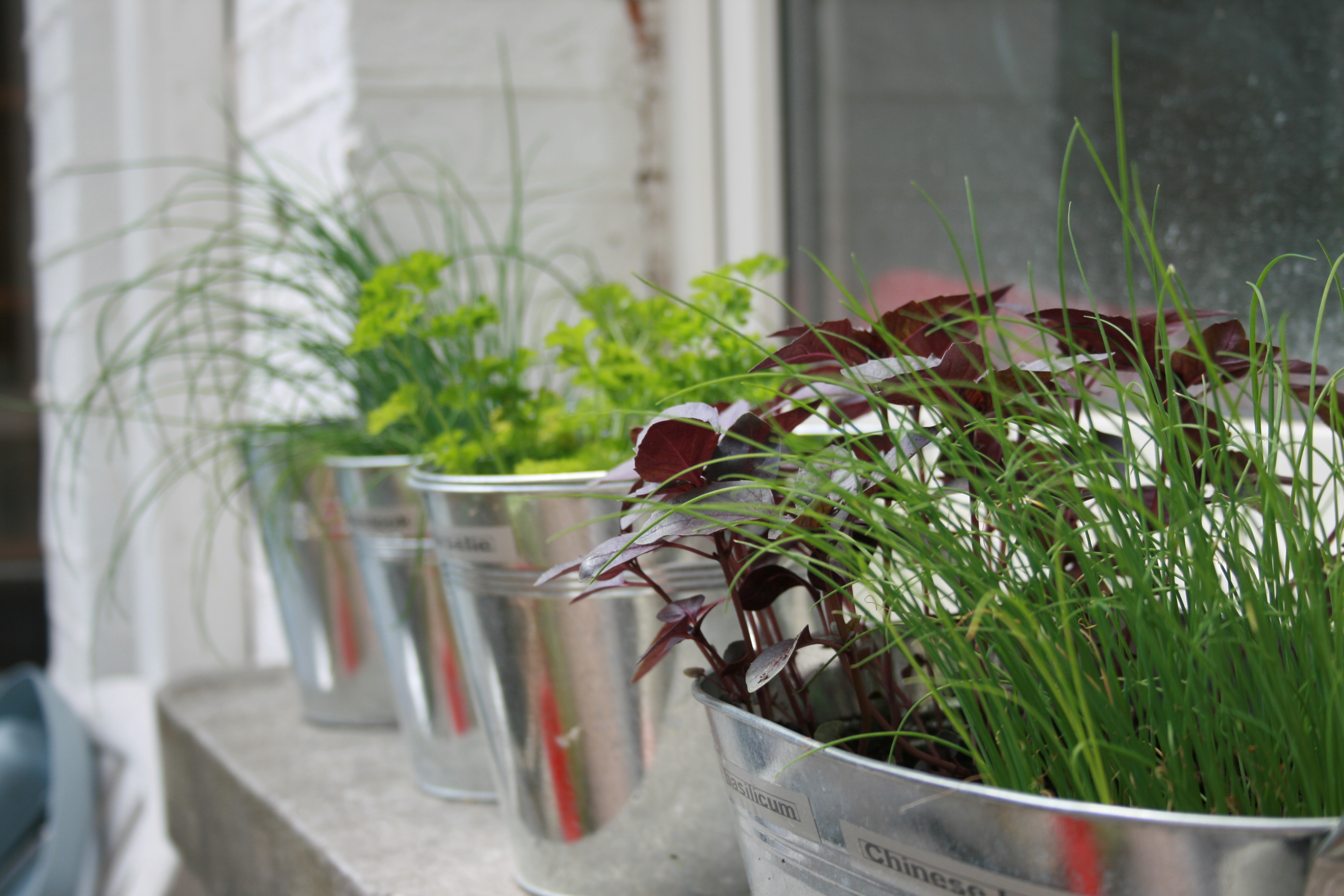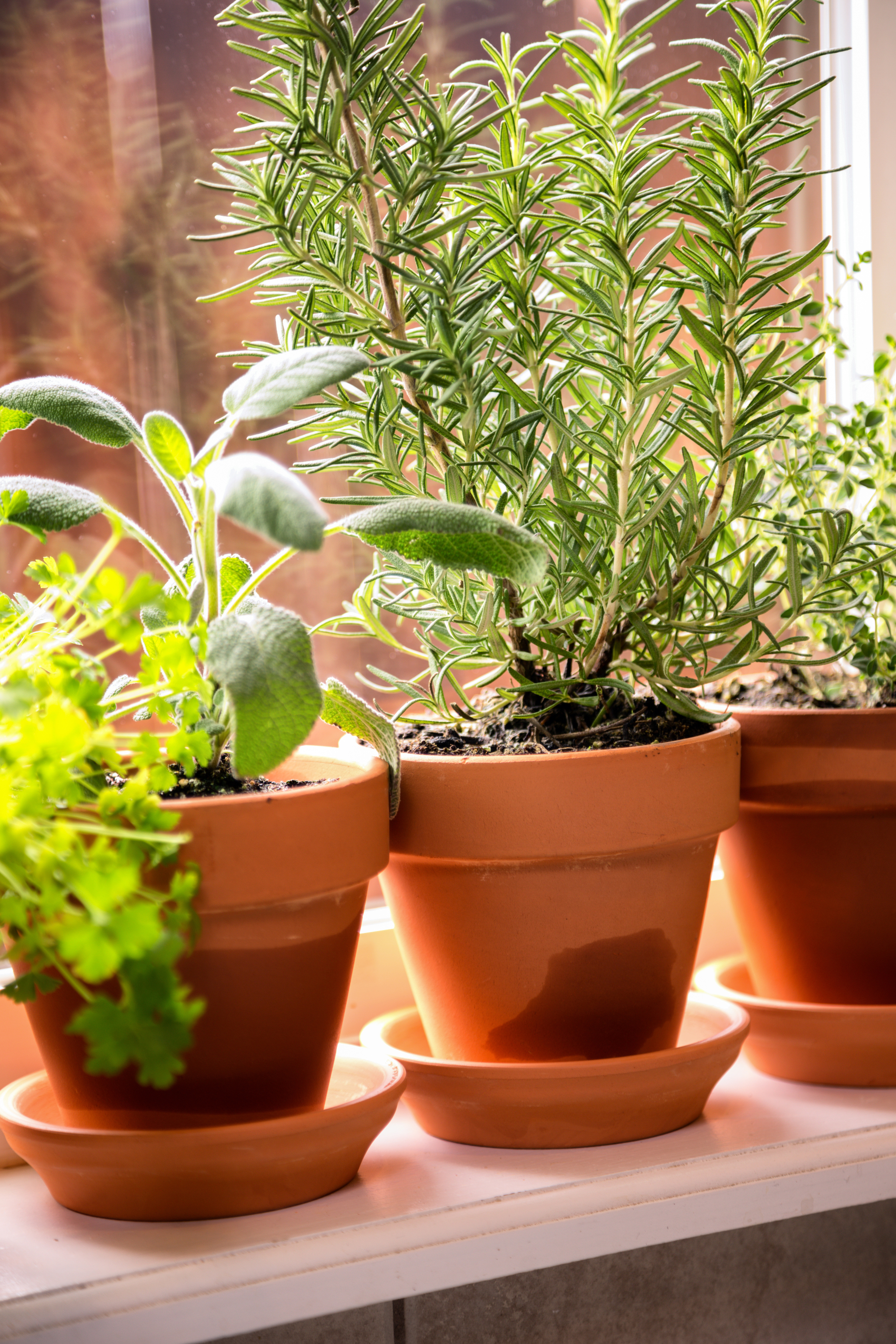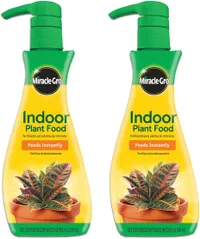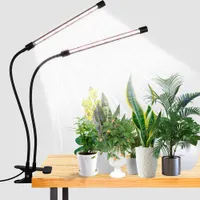5 ways to make your indoor herb garden produce more – and the one thing to never do
Look after your edible indoor garden and it will reward you with an abundant crop of aromatic leaves all year round


An indoor herb garden is every chef's dream. In fact, being able to snip sprigs of your favorite herbs within arms reach of the oven (and maybe just a few extra steps) is an idyllic setup for all of us. But, in order for your herbs to produce abundant foliage that's flavorsome and aromatic, there are a few tricks you ought to know.
Whether you have a cottage-core kitchen or a modern minimalist one, the sight of healthy herb planters on a windowsill is one that's hard to beat. Not only does it offer a green leafy addition to your space, but it's a great way to start growing your own ingredients, too. Unfortunately though, for many of us, sparse plants with withering leaves are more often the reality.
So, how do you keep your indoor herb garden healthy and prosperous? For plants that produce more leaves, experts have a few tricks up their sleeves that you'll certainly want to know about. Follow these six steps and you'll have a fruitful edible garden that promises delectable herbs all year round.

Tony O'Neill is a renowned gardening expert, author, and educator, passionate about simplifying the art of gardening for people worldwide. He is the author of Composting Masterclass and Your First Vegetable Garden, and has a thriving YouTube channel with over 365,000 subscribers and 1.2 million monthly views. Tony is also the founder of the award-winning website, Simplify Gardening.
Do: Select the right herbs

It may seem obvious, but the first step to a healthy indoor herb garden is selecting the best herbs to grow in the kitchen which are also suitable for growing indoors.
According to Amy Enfield, Ph.D., Live Goods Senior Scientist at Scotts Miracle-Gro, some herbs do better indoors than others. 'Because of reduced light levels indoors vs. outdoors, herbs that grow well in partial sun outdoors are the best options to grow indoors,' she says. 'These include chives, lemon balm, mint, Greek oregano, parsley, French tarragon, and English thyme. These herbs will grow longer and won’t be as “leggy”.'
Amy goes on to explain that even partial shade herbs should be grown in the brightest spot possible indoors since light levels will always be reduced. 'If you find yourself short on bright, sunny south-facing windows and don’t have indoor grow lights, it’s best to avoid basil, cilantro, dill, and chamomile,' she continues.
This kit has everything you need to get started with your very own herb garden. It contains nine packs of seeds with all your staple herbs including dill, basil, chives, and oregano. With nine reusable pots that are perfectly sized for seedlings, all you need to do is add the nutrient-rich soil discs and some water and voila! You'll have your own edible garden in no time.
Do: use the right sized container

As is the case with any form of container gardening, using the right type and size container will promise a healthier plant, and in the case of herbs, a better yield.
The Livingetc newsletters are your inside source for what’s shaping interiors now - and what’s next. Discover trend forecasts, smart style ideas, and curated shopping inspiration that brings design to life. Subscribe today and stay ahead of the curve.
'Herbs need room to grow, so when growing herbs indoors, make sure to select a container that gives them some space to grow,' notes Amy. 'For most herbs, a six-inch container will work fine.' She suggests containers that are glazed or made of plastic as opposed to clay or terracotta pots which tend to dry out quickly.
'When selecting your container, make sure that it also has drainage holes as herbs hate sitting in water which will cause their roots to rot,' Amy adds. 'It's also a good idea to use a tray beneath your planters to collect any excess water and help protect your tabletop or windowsill.'
Finally, when growing herbs indoors in pots, growing them in individual containers is usually best. This way, each plant can receive the ideal growing conditions it needs. 'If you want to create mixed herb gardens, select containers that are 10-12 inches in diameter or a window box,' Amy continues. 'You can also combine herbs that have the same light needs and water requirements.'
Do: use the right soil
It often comes as an afterthought, but choosing the best potting mix for containers is essential if you want your plants to produce bushy, healthy foliage. The same applies to your indoor herb garden, too.
'Choose a well-draining potting mix with added organic matter, such as compost or aged manure,' Tony advises. 'This will provide the necessary nutrients for your herbs.' It's worth noting, however, that some herbs will require different types of soil. Mediterranean herbs such as basil and cilantro, for example, prefer gritty, well-drained soil.
As a safe bet, Amy recommends filling your containers with a premium quality bagged potting mix like Miracle-Gro's Indoor Potting Mix. 'The potting mix is specially formulated for indoor container plants and has been formulated to be easy-to-water,' she adds.
Indoor herb garden planter, Amazon
For a rustic farmhouse vibe, this vintage style windowsill planter is a great choice. The tray holds three containers for a trio of separate plants, all of which come with drainage holes. The tray also allows for the drainage of excess water, preventing mess, root rot, and damage to your windowsill.
Do: prune your herbs frequently to promote more growth

By far one of the most common indoor herb gardening mistakes is failing to prune your plants regularly. Although we all love the aesthetic of a bushy basil plant or delicate sprigs of thyme, unlike other houseplants, herbs are meant to be picked, and failing to do so can actually slow down their rate of growth.
Sounds counterintuitive, right? Well, as Tony explains: 'regular pruning encourages branching, creating a bushier and more productive plant, so pinch off the tips of your herbs to stimulate growth.' The new stems that form will consequently be thicker, bushier, and more healthy.
When harvesting leaves on herbs that grow in clumps (like chives, lemongrass, cilantro, or parsley), Amy suggests picking the outer leaves first, working your way toward the center of the plant. 'For herbs that have upright stems with a growing point, like mint, stevia, basil, or sage, it’s best to snip individual branches instead, rather than leaves.'
Do: feed with a fertilizer to yield more leaves
Finally, as with any potted plant, regularly applying a fertilizer to your herbs will help them produce more leaves. 'Organic liquid fertilizers like seaweed or fish emulsion are an ideal option for indoor herbs,' Tony says.
One of the easiest ways to apply a fertilizer is to dilute a formula with water and apply it during your regular watering schedule. 'If you prefer to mix up your fertilizer in a watering like this, use Miracle-Gro's Water Soluble Plant Food for Vegetables and Herbs every 7-14 days for bountiful growth,' says Amy.
Look after your indoor herb garden properly and it will reward you with an abundant crop of aromatic leaves for all your culinary needs. It's the tasty gift that keeps on giving.
2-Pack Miracle Gro Houseplant Fertilizer, Amazon
Give your herbs a gentle boost by using Miracle Gro's plant food once a week. The organic formula is suitable for feeding edible plants and can either be applied directly to the soil or mixed with water.
Don't: put your herbs anywhere but the sunniest spot
As Amy mentions, the biggest pitfall when growing herbs indoors is a lack of sufficient lighting. In general, herbs are sun-loving plants, and mimicking their ideal conditions through indoor gardening isn't easy.
'Always place your herb garden near a south-facing window for optimal sunlight,' says Tony O'Neill, gardening expert and founder of Simplify Gardening. 'Be sure to rotate your herbs regularly to ensure they receive even light exposure and promote balanced growth.'
Ideally, herbs should receive at least six hours of sunlight each day. Tell-tale signs that your plants aren't receiving enough light include poor growth, long stems between sets of leaves, and leaves that are pale or turn yellow. 'The easiest way to make sure your herbs are getting enough light (especially during the winter months) is to place your plants under a grow light,' explains Amy. 'These specialty lights mimic direct sunlight and are a great solution if your home is short on bright, sunny south-facing windows and in the winter when natural sunlight is reduced.'
GooingTop LED grow light, Amazon
Grow lights can help your indoor herb garden stay healthy and happy during the winter months, when light levels are lower. This one from Amazon has over 13,000 reviews, the majority of which are 5 star.

Lilith Hudson is a freelance writer and regular contributor to Livingetc. She holds an MA in Magazine Journalism from City, University of London, and has written for various titles including Homes & Gardens, House Beautiful, Advnture, the Saturday Times Magazine, Evening Standard, DJ Mag, Metro, and The Simple Things Magazine.
Prior to going freelance, Lilith was the News and Trends Editor at Livingetc. It was a role that helped her develop a keen eye for spotting all the latest micro-trends, interior hacks, and viral decor must-haves you need in your home. With a constant ear to the ground on the design scene, she's ahead of the curve when it comes to the latest color that's sweeping interiors or the hot new style to decorate our homes.



